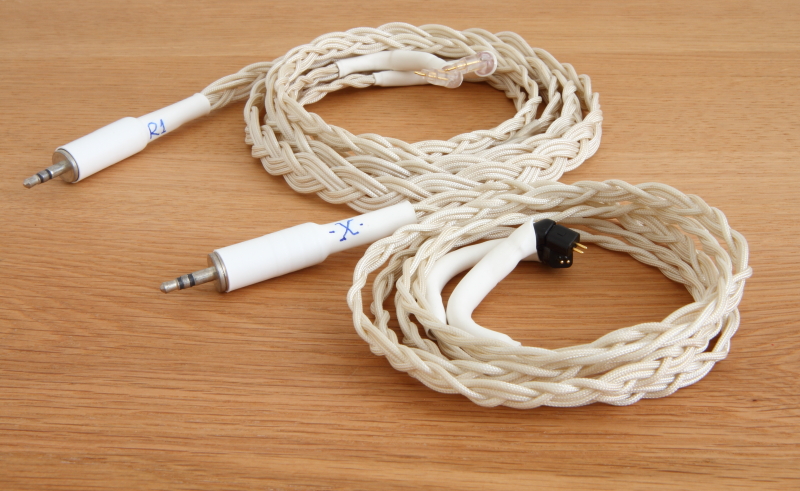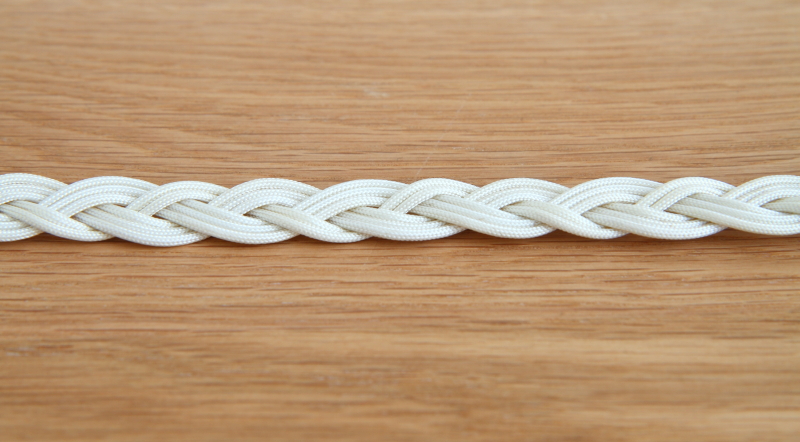I thought I might as well share my full impressions of the SilverFi X and R1 here.
SilverFi IEM-X and IEM-R1 - Artisan cables for the discerning cable connoisseur
Disclaimer
I would like to thank Sezai of SilverFi for making these demo units available for a review and
@flinkenick for including me in the tour. No incentive was given for a favourable review.
SilverFi
Based in Antalya, Turkey, SilverFi is a company that always invokes images with me of a master craftsman at work in his mountain workshop, smelting silver and painstakingly drawing wires to craft the gorgeous looking cables. Okay, perhaps I have a little too much imagination, but SilverFi does really build its cables from the ground up. They select the materials and draw the wires in accordance with their own specifications an indeed everything about their cables is very much done in accordance with their own philosophy. From what I learned about SilverFi, I understood them to prioritise tonality and realism over outright resolution. SilverFi cables are about tone, timbre and coherence, just the sort of things I prioritise as well. So as soon as I first learned about SilverFi, I wanted to try their cables, especially after I had bought my Empire Ears Phantom, which were tuned with much the same philosophy in mind. Of course it did not help that friends of mine kept teasing me with their Top Of The SilverFi Line R4's and R5's and emphasising just how gorgeous the Phantom sound when paired with those cables. So what can I say, I might as well enjoy the ride down the rabbit hole...
Build quality and ergonomics
With a SiverFi cable you are sure to get something completely unique. I have seen, demoed and reviewed a fair few cables by now, but I have not come across anything quite like these, especially the R1. Both the X and R1 have a similar construction with the X made up of 4 wires and the R1 of 8 wires. Each wire is sleeved in cotton and the braiding is asymmetric where there are 4 wires, so under the Y-split on the X and on the left and right side on the R1. The R1 under the y-split is a stunningly gorgeous flat braid.

The connectors are angled 2-pin that have a very thick and sturdy heat shrink to form the curve around the ear. Here I get into the somewhat difficult to review area of ergonomics. The way these heat shrinks are intended to work is customised, much like CIEMs are. Sezai explained to me that any new customer is asked for a 1/1 scale of their ears to ensure the best fit. Because these cables are demo units the fit was invariably going to be sub-optimal and so I naturally struggled a bit to get the loops to sit comfortably around my ears. I could bend them a little, but I did not want to do that too much and the sturdiness prevented the cable from resting on my ear. This also caused the worsening of the microphonics. I do think that with a proper fit this will work a lot better, although I am personally not a huge fan of the thickness of the heat shrink in any case. I wear glasses and generally prefer the loops around my ears to be as supple as possible and it does make me wonder if it would be possible to forgo the heat shrink altogether with these cables. Another suggestion I came up with was to use PlusSound connectors, and purely by coincidence I caught up with Sezai, who explained to me that they were testing various alternative connectors such as Eidolic and PlusSound. There were still some concerns, as the original Eidolic connectors would bend during the soldering process, but the newer 'plus' versions were much more promising. Clearly Sezai has taken criticism of the ergonomics to heart and is hard at work to improve this area without compromising on the sound or strength of the soldering.
Overall I love the look of the cables and have been able to use them without too many issues for short listening sessions. I think these type of cables, especially the R1 are best used at home behind your desk or lying on the sofa to enjoy the music without any distraction because at the end of the day, these cables are uncompromisingly about sound quality and you really want to savour that.
Source
All listening was done with my AK70 from the SE out using the Empire Ears Phantom.
IEM-X (US$ 496)
This is a cable I have been very curious about for a while now. Given SilverFi's emphasis on tone and timbre, I was very interested to hear how it would compare to the similarly priced Effect Audio Lionheart. Lionheart is a very natural sounding cable with a wonderful tone, but uses copper wires instead of the silver of the X and so the two seemed to be different approaches to similar goals. Hearing the X I quickly found a different sound, as Lionheart is quite warm, but the X is much more neutral.

The stage of the X is not as big as that of other cables I have used with my Phantom, such as Effect Audio's bespoke 8-wires and Leonidas II. While it stays more on the intimate side, it is very holographic, airy and the imaging is very good. With complex and layered choral music such as Bach's Magnificat, I found excellent positioning of the vocals and it gave a clear sense of how the choir was built up. Similarly, Carbon Based Lifeforms' album Hydroponic Garden (down tempo EDM) was great to listen to. More intimate than I am used to, but still conveying a good sense of physical space. The X also improves the level of detail coming through and pushes the Phantom a little more towards the articulate side.
The overall tonality with my Phantom feels to me more neutral-natural, giving the Phantom a slightly brighter feel than I am used to. The bass is well controlled, has great texture to it and a very nice impact that I felt worked great for the type of down tempo EDM I occasionally like to listen to. The bass however does not add much warmth to the mid-range and while I feel mid-range tonality is very good, I would have liked instruments to have a bit more warmth to them. I have been listening a lot to Beethoven's 7th recently and with every pairing I tried brass instruments and woodwinds have a full sound to them, but with the X that fullness is reduced a bit and that is especially noticeable with brass instruments that do not quite have the same authority. I am being very picky here, as the tone is still very good and is simply more neutral-natural compared to the warm-natural tone I am so used to. The treble is energetic, but smooth. While brass instruments might lack the authority a little due to the reduced warmth, they have enough bite to them to make their presence known and that is in itself of course quite accurate. There is nothing worse than brass instruments that sound too smooth, something I experience with Lionheart when I use that cable from the balanced out of my AK70. No such wishy-washy treble with the X and it gives violins a lovely bite as well.
IEM-R1 (US$ 999)
The R1 is in my opinion a clear step up from the X and while their DNA seems to be very similar, they offer a somewhat different tone from one another. Where the X is a more neutral cable, the R1 has just that type of warmth that I love so much. The overall sound feels smoother, more organic and in my opinion, more accurate in tonality.

The R1 offers a much wider and deeper stage than the X and feels perhaps less holographic, but all the more natural. The R1 is so airy and spacious that it feels more like sitting at a performance, rather than wearing IEMs. It is not an extremely out-of-the-head experience, but just feels more natural, also in the way details are presented. The R1 improves the level of details that come through more so than the X and yet the details are presented less forward. It is the type of more nuanced presentation that I prefer, as I personally feel it is more accurate. I don't need my IEMs to slap me in the face with so much detail that it becomes fatiguing after 10 minutes. I much prefer this type of fatigue-free listening, where I can close my eyes and drift away in the smoothly flowing music, picking out the details at my leisure. That is also what I love about the Phantom and the R1 seems to compliment that very well.
As I indicated already, the tonality of the R1 is more what I consider to be accurate, with just a little bit of extra warmth compared to the X to improve the fullness of instruments. Indeed, I feel that instruments sound more "complete". That is not only because of the incredibly good level of transparency, but instruments get more body from the warmth. The brass instruments I described with the X for instance get extra authority that helps them rise more clearly above the other instruments. The R1 improves tonal contrast, separating instruments based on tonality rather than pulling them apart so far that it hurts coherency. I also love listening to Paganini and with the R1 I hear not just so much more texture of the strings coming through, but the resonance within the body of the violin as well. That warmth really helps there. In fact, I think that with the R1 my Phantom were giving me some of the best violin sections I have heard so far. It seems the R1 really helps to bring out strings, any strings, as the acoustic guitars of the Foo Fighters were also coming through incredibly well.
The bass with the R1 is a little fuller than with the X and I prefer it. The double bass or cello become a bit more resonant and that is something I particularly like, either with classical music such as Bach's Cello Concertos, of Jazz, such as Caro Emerald. It is warm and lush, as it should be, but without overdoing it. The mid-range is more natural on the R1 than with the X and it is among the most natural sounding mid-ranges of any cable pairing I have tried with my Phantom. It is very well balanced with enough fullness to sound accurate, but again not overdoing it. The treble too is smooth and perhaps not what you would call sparkly, but balanced really well. I love listening to the vocal jazz of Madeleine Peyroux and hearing the brushes on the cymbals come through with a wonderful clarity and delicacy at the same time.
Conclusions
I have not spent anywhere near as much time with these cables as I would have liked, largely due to the cables not looping tightly enough around my ears, which meant the weight of the cables kept pulling too much on the IEMs. As explained, this is simply because the cables are demo units. Purely for the sound I could have easily enjoyed them for many hours more, especially the R1, which had great synergy with my Phantom and catered to my preferences very well. The X is a great, more neutral cable with really good imaging and a neutral-natural tonality when paired with my Phantom. The R1 is a clear step up with a bigger stage, even better imaging, great transparency and a more warm-neutral tonality when paired with the Phantom.


































